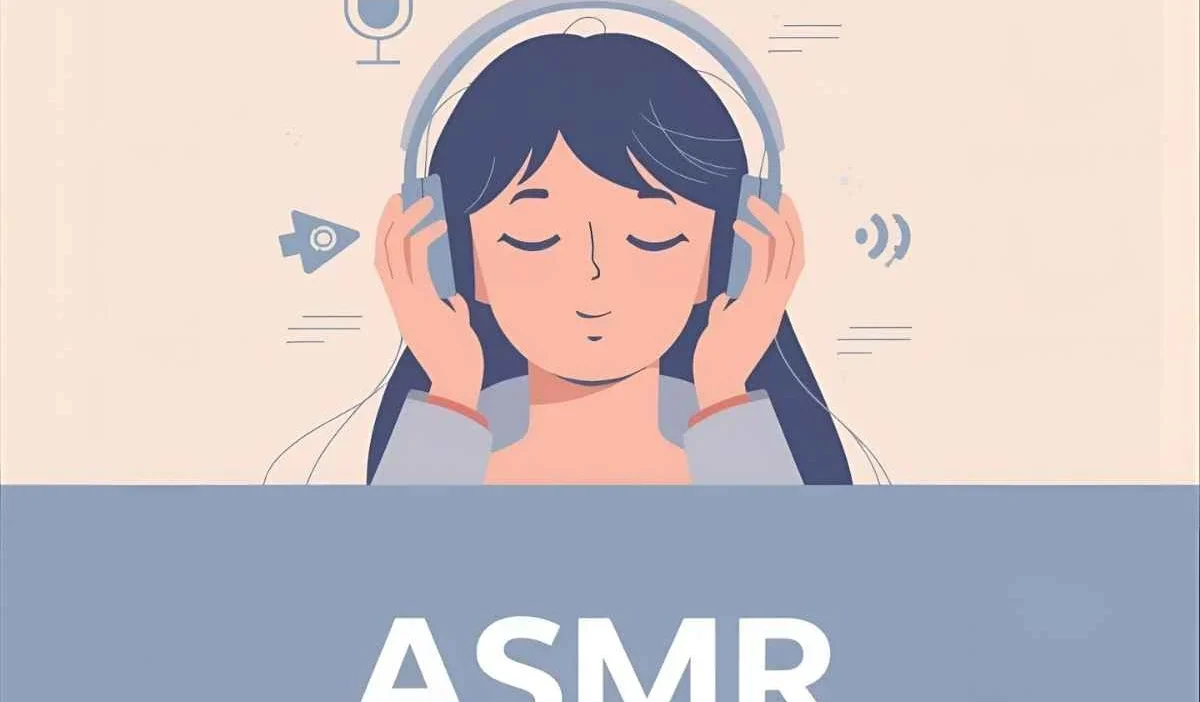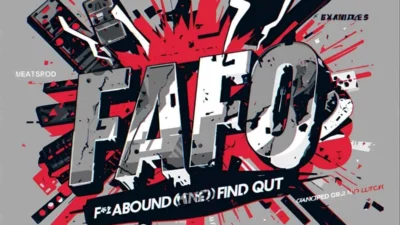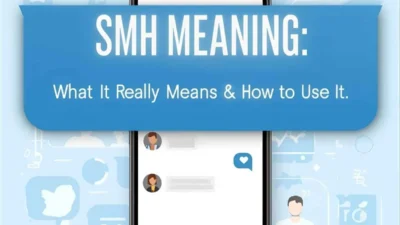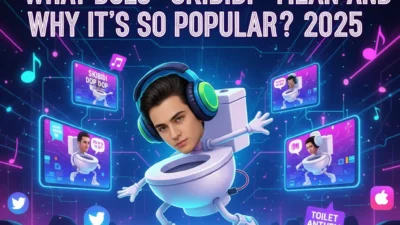Ever wondered why millions of people watch videos of whispering, tapping, or soft crinkling sounds? That’s the power of ASMR — a fascinating internet trend that’s more than just relaxing sounds.
ASMR stands for Autonomous Sensory Meridian Response, and it describes a pleasant, tingling sensation people feel in response to gentle triggers like whispers, brushing, or soft tapping.
In this article, you’ll learn:
- What ASMR means
- How it started and became a global trend
- Its use across platforms like YouTube, TikTok, and Instagram
- Real-life examples and related terms
- FAQs and tips on how to experience ASMR safely
What Does ASMR Mean?
ASMR stands for Autonomous Sensory Meridian Response — a tingling, calming sensation usually felt on the scalp, neck, and spine when someone hears or sees certain relaxing triggers.
It’s not slang or an abbreviation for texting, but rather a scientific term turned into a viral internet sensation used across YouTube, TikTok, and streaming platforms.
Origin and Popularity of ASMR
The term ASMR was first coined in 2010 by Jennifer Allen, a cybersecurity professional who noticed the strange tingling feeling certain sounds gave her. She wanted a neutral, scientific term to describe it — so she created “Autonomous Sensory Meridian Response.”
By 2013, ASMR videos started trending on YouTube, and by the late 2010s, the genre exploded thanks to creators like Gibi ASMR, ASMR Darling, and Gentle Whispering.
Today, ASMR isn’t just a niche hobby — it’s a multimillion-view category on social media, used for relaxation, sleep aid, and stress relief.
🕒 Mini timeline:
- 2010: Term “ASMR” coined
- 2013–2015: Early YouTube creators rise
- 2018: ASMR becomes a mainstream trend
- 2020s: Popular across TikTok, Spotify, and Instagram
ASMR Meaning in Different Contexts
ASMR can mean slightly different things depending on the platform or context:
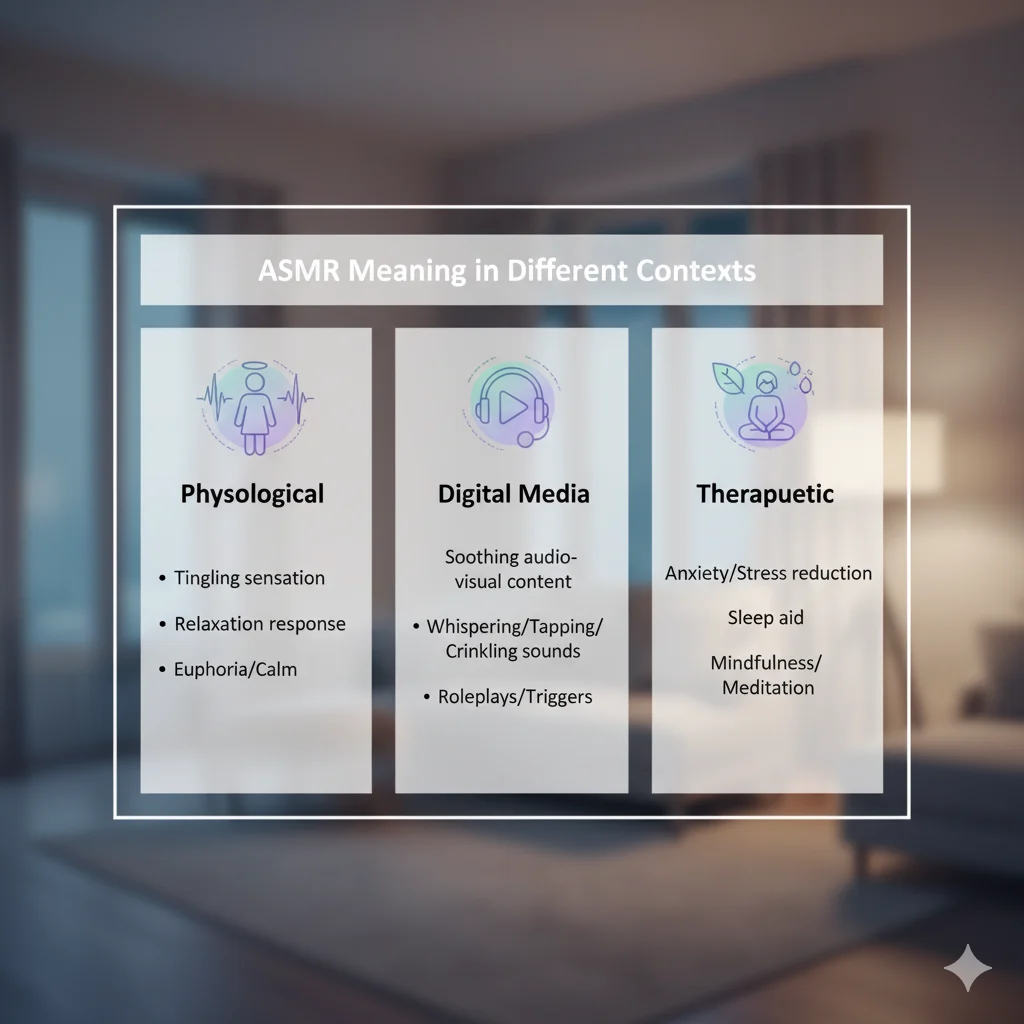
1. On YouTube
- ASMR videos use binaural microphones and high-quality audio to create immersive sound experiences.
- Common triggers: whispering, tapping, brushing, page turning, and role-plays (e.g., “spa day” or “doctor checkup”).
2. On TikTok
- Short ASMR clips focus on visual and auditory triggers, like soap cutting, keyboard sounds, or hair brushing.
- Often combined with aesthetic visuals and satisfying edits.
3. In Everyday Use
- People use “ASMR” casually to describe anything deeply relaxing or soothing, even outside videos.
“That rain sound gave me ASMR.”
Add a comparison table showing ASMR usage across YouTube, TikTok, and casual speech.
| Platform | Type of ASMR | Example | Purpose |
| YouTube | Full-length videos | Whispering roleplay | Sleep & relaxation |
| TikTok | Short clips | Tapping or cutting sounds | Quick stress relief |
| Everyday Talk | Metaphor | “This music gives me ASMR.” | Describe calm feeling |
Examples of ASMR in Conversations
Example 1:
Friend 1: Can’t sleep again 😩
Friend 2: Try watching ASMR videos — they knock me out every night!
Example 2:
Comment on TikTok: “This slime cutting video gives me serious ASMR vibes 😍.”
Example 3 (formal use):
“The ASMR community emphasizes sound quality and personal connection to help people relax.”
Similar or Related Terms
ASMR often appears alongside related or semantically similar internet trends:
| Term | Meaning | Relation to ASMR |
| Satisfying videos | Visually calming clips (e.g., soap cutting) | Often overlap with ASMR |
| White noise | Consistent background sound for focus or sleep | Used in ASMR playlists |
| Binaural audio | 3D sound recording technique | Essential for immersive ASMR |
| Triggers | Sounds or visuals causing ASMR | Core concept in ASMR culture |
How to Use the Word “ASMR” Correctly
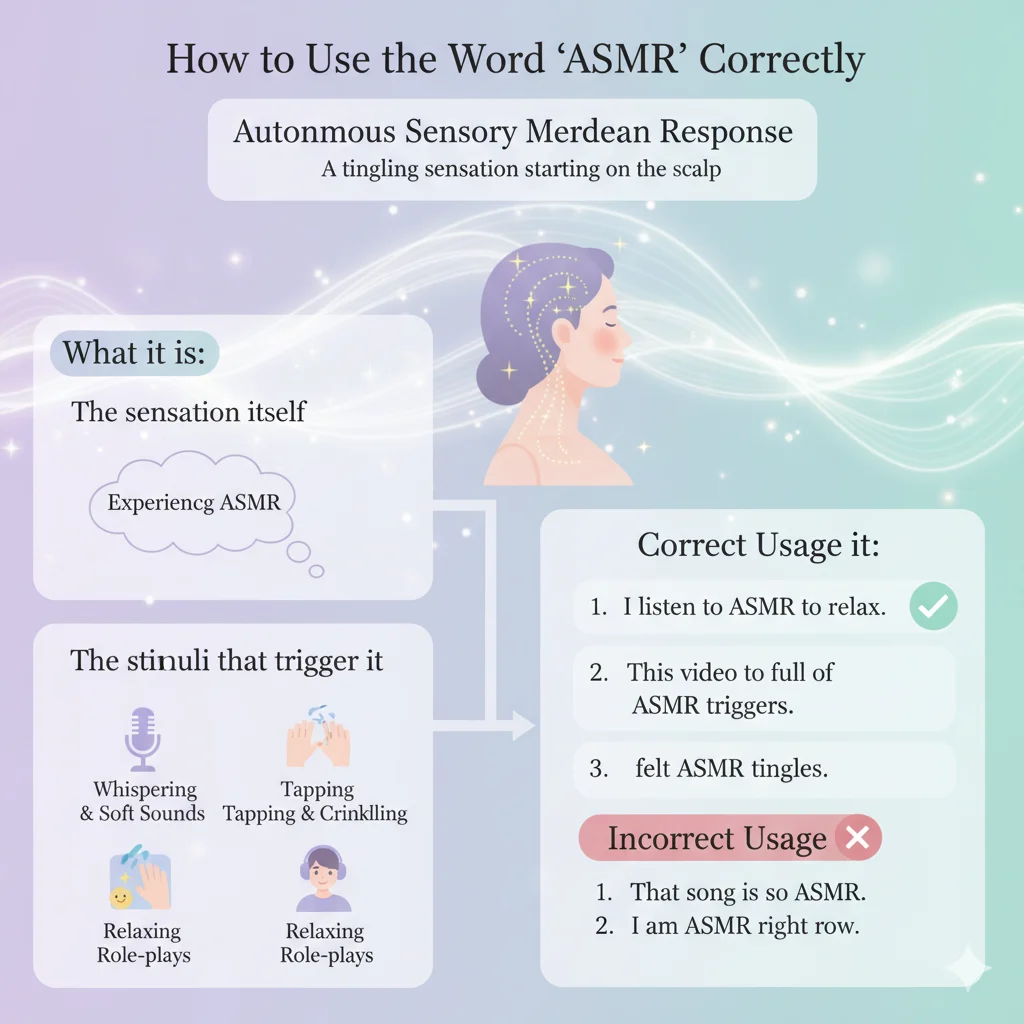
✅ Do:
- Use it when describing relaxing, tingling sensations from sounds or visuals.
- Mention it when discussing YouTube or TikTok content genres.
❌ Don’t:
- Use “ASMR” as slang in unrelated contexts (like texting).
- Confuse it with “sleep sounds” — while related, ASMR focuses on triggers, not just background noise.
Example sentence:
“I love falling asleep to ASMR tapping videos — they’re so calming.”
Common Mistakes or Misinterpretations
- Mistake 1: Thinking ASMR is a medical term — it’s not officially recognized by science yet.
- Mistake 2: Confusing ASMR with general relaxation — ASMR involves specific sensory triggers.
- Mistake 3: Assuming everyone experiences it — some people don’t feel ASMR tingles at all, and that’s perfectly normal.
FAQs About ASMR Meaning
1. What does ASMR mean?
ASMR stands for Autonomous Sensory Meridian Response, a tingling and relaxing sensation triggered by specific sounds or visuals like whispering or tapping.
2. Is ASMR slang or scientific?
It started as a scientific-sounding term but became a mainstream internet genre. It’s not slang — it’s a label for a sensory experience.
3. Who invented the term ASMR?
The term was coined in 2010 by Jennifer Allen, who wanted a neutral, research-friendly name for the tingling feeling she experienced.
4. Why do people watch ASMR videos?
People watch ASMR for relaxation, sleep improvement, anxiety relief, and comfort — often as part of nighttime routines.
5. Can everyone feel ASMR?
No. Studies suggest around 80% of people experience ASMR, while others don’t feel tingles but still find the sounds relaxing.
6. Is ASMR safe?
Yes — ASMR is completely safe and natural. However, viewers should avoid overexposure to loud triggers that may cause discomfort.
Conclusion
Now that you know the true meaning of ASMR, its origin, and how it’s used online, you can appreciate why this sensory phenomenon has taken over the internet.
Whether you’re watching whispering videos to fall asleep or scrolling through calming TikToks, ASMR offers a soothing escape in a noisy world.
✨ Now that you know what ASMR means, you’ll never be confused again! Keep exploring our site for more internet slang and trending terms

Evie Wyld is a word-meaning specialist at Meanovia.com. She simplifies complex words, phrases, and language trends, helping readers quickly grasp the exact meaning behind every term in a clear and approachable way.

